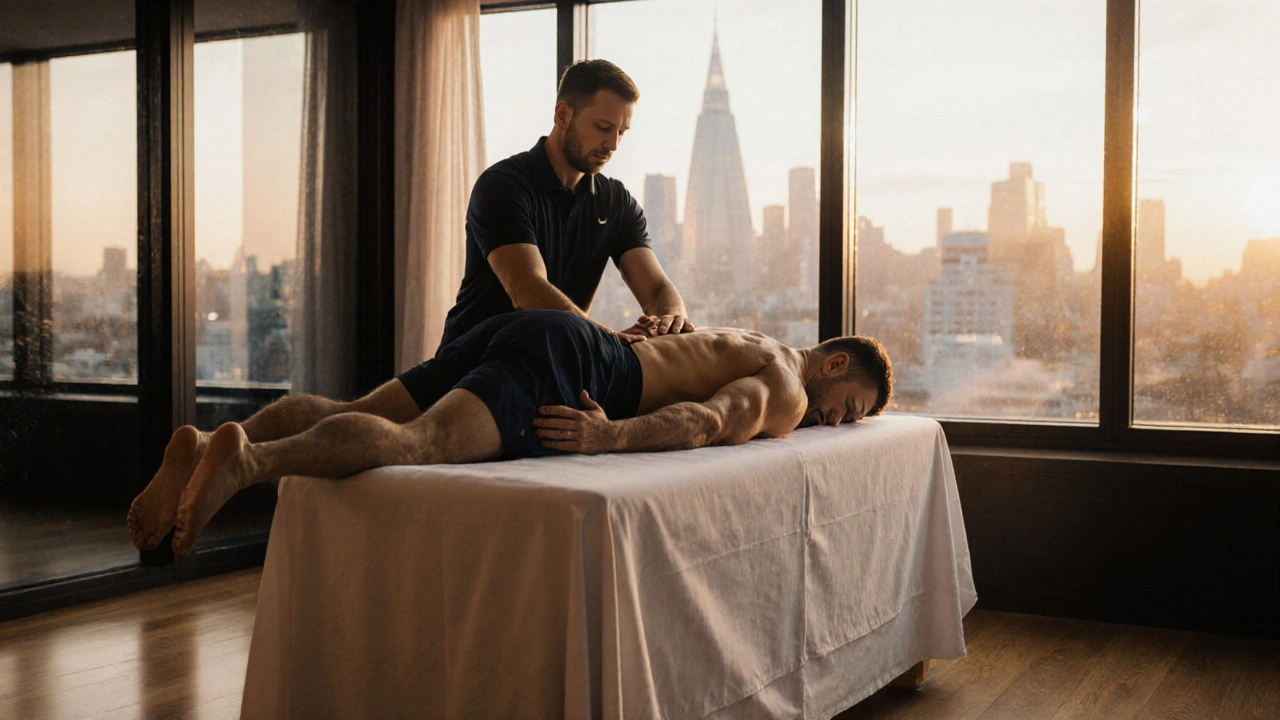Discover how sports massage in London boosts fitness, speeds recovery, and prevents injuries. Learn benefits, types, pricing, safety tips, and how to book your session.
Muscle Injury: Understanding Causes, Treatment, and Recovery
When dealing with muscle injury, damage to muscle fibers caused by strain, overuse, or trauma. Also known as muscle strain, it can limit movement and cause pain. Most people think it’s just a sore spot, but the reality is a cascade of inflammation, scar tissue, and reduced range of motion. If you’ve ever felt a tight knot after a workout or a sudden twinge while lifting, you’ve experienced a mild form of this condition. Recognizing the signs early—sharp pain, swelling, and loss of strength—lets you act before the problem deepens.
One of the most effective ways to break down scar tissue is deep tissue massage, a technique that applies firm pressure to reach the deeper layers of muscle and fascia. It directly targets the hardened areas that often develop after a muscle injury. By increasing blood flow, it delivers oxygen and nutrients that speed up healing. Think of it as a reset button for your muscles, loosening the knots that keep you stiff.
For athletes or anyone who pushes their body regularly, sports massage, a specialized massage focusing on muscle groups used in specific sports is a game‑changer. It not only eases existing pain but also prepares muscles for future activity. The rhythmic strokes improve flexibility, reduce fatigue, and help prevent new injuries. In practice, a sports massage session often includes stretching and targeted pressure that mirrors the movements you do on the field or in the gym.
Key Approaches to Healing
Beyond massage, addressing muscle knots, tight, localized areas of muscle that feel like a small nodule under the skin is crucial. Knots form when muscle fibers contract and fail to release, often after a strain. They can refer pain to other parts of the body, making the original injury feel worse. Techniques like trigger point therapy, self‑myofascial release with a foam roller, or even simple heat packs can soften these spots and restore normal muscle length.
All of this feeds into the broader process of rehabilitation, a planned program of exercises, therapy, and lifestyle adjustments aimed at restoring function. Rehabilitation isn’t just about passive treatment; it’s an active partnership between you and your therapist. Structured strength training, mobility drills, and progressive loading rebuild the muscle’s capacity to handle stress. When combined with regular deep tissue or sports massage, rehab speeds up tissue remodeling and reduces the risk of re‑injury.
So, how do these pieces fit together? A muscle injury often leads to muscle knots, which impede circulation. Deep tissue massage breaks down those knots, while sports massage optimizes muscle performance for the activities you love. Rehabilitation then consolidates the gains, ensuring the muscle regains strength and flexibility. In short, each step supports the next, creating a loop of healing and prevention.
If you’re wondering where to start, begin with a professional assessment. A qualified therapist can identify the exact location of the injury, the severity of any knots, and recommend a tailored mix of deep tissue and sports massage. Follow that with a home routine—stretching, gentle foam rolling, and proper hydration—to keep the muscles supple between sessions.
Finally, remember that recovery is a personal journey. Some people bounce back in weeks; others need months. Listening to your body, staying consistent with therapy, and adjusting intensity based on pain levels are the best predictors of a full return to activity. Below you’ll find a curated collection of articles that dive deeper into each of these topics, offering practical tips, science‑backed insights, and real‑world advice to help you navigate every stage of a muscle injury.

